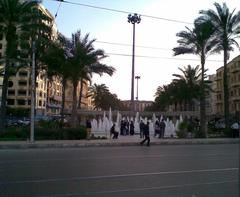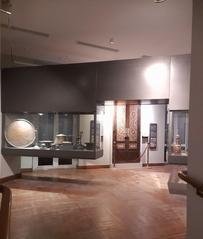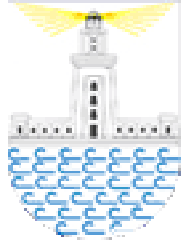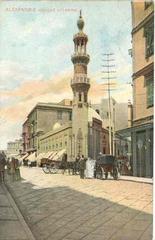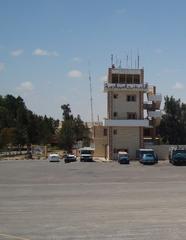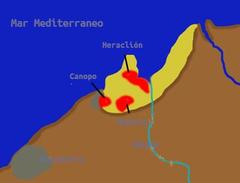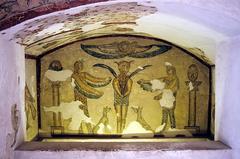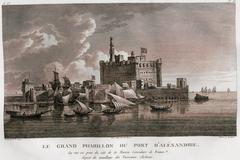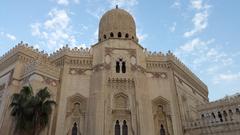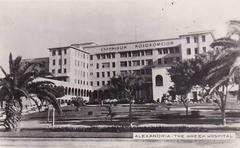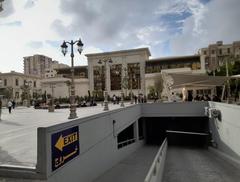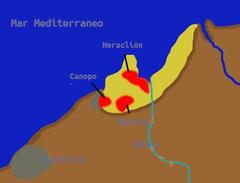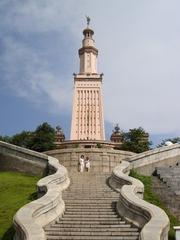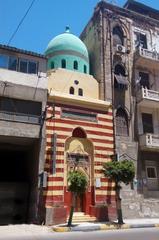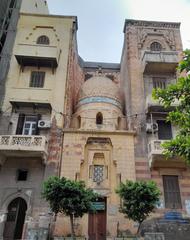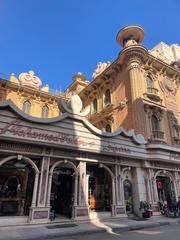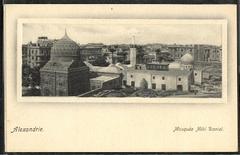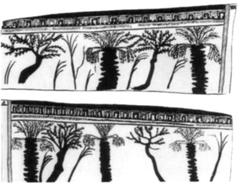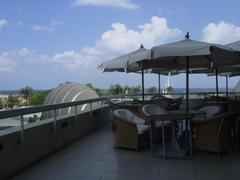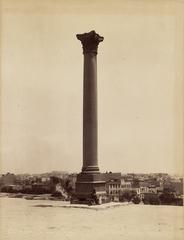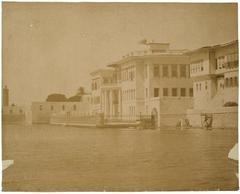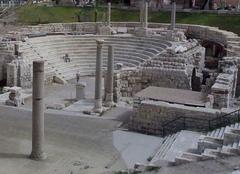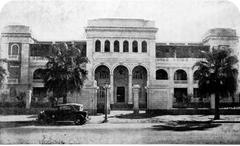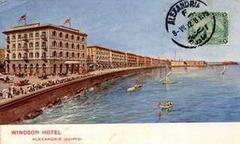Cistern of Al-Nabih Visiting Hours, Tickets, and Alexandria Historical Sites Guide
Date: 14/06/2025
Introduction
The Cistern of Al-Nabih, also known as “Sabil Al-Nabih” or “Bir Al-Nabih,” is one of Alexandria’s most intriguing hidden gems. Beneath the bustling streets of this ancient city, the cistern stands as a testament to Alexandria’s rich historical evolution and the ingenuity of Ottoman-era water management. This comprehensive guide will provide you with essential information on visiting hours, ticketing, accessibility, nearby attractions, and the cultural and architectural significance of the Cistern of Al-Nabih. Whether you are a history enthusiast, researcher, or cultural traveler, this guide will help you make the most of your visit to one of Alexandria’s most captivating historical sites (UNESCO, 2023; Archnet, 2024; CEAlex; Alex Med, Bibliotheca Alexandrina).
Table of Contents
- Historical Overview
- Architectural and Engineering Features
- Urban Context and Location
- Socio-Cultural Significance
- Preservation and Conservation
- Visitor Information
- Practical Tips for Visitors
- Frequently Asked Questions (FAQ)
- Visuals and Media Suggestions
- References and Further Reading
- Conclusion and Call to Action
Historical Overview
Constructed during the late 18th or early 19th century Ottoman period, the Cistern of Al-Nabih was an integral part of Alexandria’s extensive water storage and distribution network. The city’s distance from the Nile and the salinization of groundwater after the 365 AD tsunami necessitated the creation of such cisterns. At its peak, Alexandria boasted over 200 similar structures, with Al-Nabih among the best preserved (Archnet, 2024; Semanticscholar).
These cisterns stored Nile floodwater and rainwater, providing a crucial supply during droughts and times of siege—most notably during the French occupation (1798–1801) when external supplies were restricted (UNESCO, 2023). The Cistern of Al-Nabih was also associated with charitable endowments (waqf), distributing water to the public, particularly during Ramadan and religious festivals (ICOMOS Egypt, 2024).
Architectural and Engineering Features
The Cistern of Al-Nabih exemplifies Ottoman hydraulic engineering, characterized by:
- Multi-storey Hypostyle Structure: The cistern features three underground levels with 48 stone columns, many repurposed from older Roman and Byzantine buildings. These columns are arranged in four rows and display a blend of Corinthian and Ionic capitals, reflecting Alexandria’s rich architectural mosaic (Ancient Worlds; CEA).
- Vaulted Arches & Waterproofing: The vaulted ceilings distribute weight efficiently, while hydraulic lime plaster seals the walls and floors, minimizing water loss and contamination (Semanticscholar).
- Capacity: Although exact dimensions are unpublished, similar cisterns in Alexandria can store up to 2,500 m³ of water (Semanticscholar).
- Ventilation and Access: Ventilation shafts maintain water quality, and an external staircase (added in 1890) allows visitors to view the interior through a window (CEAlex).
Urban Context and Location
The cistern is situated near Al-Nabih Street and Al-Mansheya Square, within Alexandria’s historic core and close to the Shallalat Gardens, medieval city walls, and Rosetta Gate (Google Maps). This strategic placement served both military and civilian needs and facilitated public access to water. The area is surrounded by Ottoman, Italianate, and French colonial architecture, reflecting Alexandria’s cosmopolitan past.
Socio-Cultural Significance
- Charitable and Social Role: The cistern functioned as a sabil (public water source) endowed by waqf, providing free water to the community, especially during religious occasions (Archnet, 2024).
- Cultural Events: Occasionally, the cistern hosts small-scale cultural events, art installations, or musical performances, taking advantage of its unique acoustics and ambiance.
- Community Engagement: Local guides and heritage organizations actively involve the community in the site’s preservation and interpretation (ICOMOS Egypt, 2024).
Preservation and Conservation
Registered as a historical monument since 1898 and legally protected under Egyptian Law 144/2006, the cistern faces threats from urban encroachment, water infiltration, and past adaptations (such as WWII air raid shelter use) (Alex Med, Bibliotheca Alexandrina). Conservation efforts by ICOMOS Egypt, Alex Med, and CEAlex include:
- Systematic documentation and 3D scanning
- Architectural and condition surveys
- Public awareness campaigns
Direct access to the cistern interior is currently limited to protect the structure, with future plans to improve accessibility and visitor experience.
Visitor Information
Visiting Hours & Ticket Prices
- General Hours: Typically open Tuesday to Sunday, 9:00 AM–5:00 PM; closed Mondays and public holidays. However, hours may vary due to conservation work—always check with local authorities or the Bibliotheca Alexandrina website for updates.
- Tickets: Adult tickets are generally 50 EGP; students (with valid ID) 25 EGP; children under 12 are free. Entry may be free for special events or research visits, but guided tours can have separate fees (GetYourGuide).
How to Visit & Accessibility
- Guided Tours: Available in English and Arabic by prior arrangement, lasting about 45 minutes, and providing valuable historical context. Booking in advance is recommended, especially during peak seasons.
- Accessibility: Due to its underground structure and historic layout, accessibility is limited. External staircases lead to a viewing window. Wheelchair access is restricted—please inquire in advance for possible accommodations.
- Visitor Guidelines:
- No touching or climbing on ancient masonry
- No flash photography; tripods by permission only
- Small group sizes
- Visits supervised by qualified guides
Nearby Attractions
Combine your visit with other Alexandria historical sites such as:
- Shallalat Gardens
- Al-Mansheya Square
- Rosetta Gate and medieval city walls
- Ottoman-era mosques
- Alexandria National Museum
- Bibliotheca Alexandrina
- The Citadel of Qaitbay
- Pompey’s Pillar (Local Guide to Egypt; Egypt Tours Plus)
Practical Tips for Visitors
- Best Time to Visit: October–April offers the mildest weather. Early morning or late afternoon visits provide a quieter atmosphere and dramatic light for photography.
- What to Bring: Comfortable, non-slip shoes (the steps can be slippery), bottled water, a flashlight if permitted, and a light jacket for the cool interior.
- Safety and Etiquette: Dress modestly, keep valuables secure, and avoid public displays of affection. Tipping guides and staff (20–50 EGP) is customary.
- Language: Arabic and English are widely spoken, but learning a few local phrases is appreciated.
- Health: Avoid drinking tap water; use sunscreen and hats for time spent outside.
- Photography: Respect preservation rules—no flash or touching the stonework.
Frequently Asked Questions (FAQ)
Q: What are the current visiting hours for the Cistern of Al-Nabih?
A: Generally Tuesday–Sunday, 9:00 AM–5:00 PM. Confirm in advance due to possible conservation closures.
Q: How much do tickets cost?
A: Adults: 50 EGP; Students: 25 EGP; Children under 12: Free. Guided tours may have additional fees.
Q: Is the site accessible for people with disabilities?
A: Accessibility is limited due to narrow stairs and lack of elevators. Please contact the site for assistance.
Q: Are guided tours available?
A: Yes, in English and Arabic; advance booking is recommended.
Q: Can I take photos inside the cistern?
A: Photography is generally allowed, but flash and tripods may be restricted.
Q: Where can I find official updates?
A: Check the Alex Med project page, CEAlex, and the Alexandria Tourism Official Website.
Visuals and Media Suggestions
To enhance your visit and for digital engagement, include:
- High-quality images of the cistern’s columns, vaulted ceilings, and exterior access points
- Alt text such as “Cistern of Al-Nabih Alexandria underground vaults” or “Stone columns inside Alexandria cistern”
- Interactive maps highlighting the cistern’s location among Alexandria’s historical sites
- Virtual tours and 3D reconstructions where available
References and Further Reading
- UNESCO World Heritage: Alexandria
- Archnet: Alexandria Waterworks and Cisterns
- Alexandria and Mediterranean Research Center (Alex Med)
- ICOMOS Egypt
- Centre d’Études Alexandrines (CEAlex)
- Alexandria Tourism Official Website
- Local Guide to Egypt: Alexandria Sights
- Egypt Tours Plus: Visiting Alexandria
- Semanticscholar: Alexandria Cisterns
Conclusion and Call to Action
The Cistern of Al-Nabih is a remarkable testament to Alexandria’s historical resilience, architectural ingenuity, and the enduring significance of water management in urban life. Ongoing conservation and research efforts ensure that this unique site remains accessible for future generations. Plan your visit by checking current hours and ticketing, and consider exploring nearby attractions for a comprehensive cultural experience.
Enhance your visit by downloading the Audiala app for guided heritage tours, up-to-date information, and exclusive content. Stay connected with us on social media for news, tips, and updates on Alexandria’s living history. Let the Cistern of Al-Nabih be your gateway to discovering the deeper layers of Alexandria’s past.

